Considerations in Adopting Variable Rate Irrigation
Derek M. Heeren1, Assistant Professor and Water for Food Global Institute Faculty Fellow
J. Burdette Barker1, Post-Doctoral Research Associate
Tsz Him Lo1, Graduate Research Assistant
Steven R. Melvin2, Extension Educator
Derrel L. Martin1, Professor and Water for Food Global Institute Faculty Fellow
Joe D. Luck1, Associate Professor
1 Department of Biological Systems Engineering, University of Nebraska–Lincoln
2 Southeast Research and Extension Center, University of Nebraska–Lincoln
There is increasing pressure on our water resources. Concerns about natural ecosystems and the sustainability of groundwater withdrawals are heightening. Domestic and international competition for water between different users is increasing. Agricultural demand by a global population growing both in number and in wealth is rising. All these trends prompt us to manage our water more precisely. Specifically, irrigation—the largest user of freshwater in Nebraska and worldwide—can be applied more precisely. Besides improving when irrigation is applied (i.e., irrigation scheduling), where irrigation is applied (spatially) can be improved as well.
Variable rate irrigation or VRI is “the ability to spatially vary water application depths across a field to address specific soil, crop, and/or other conditions” (Evans and others, 2013). This technology has many potential uses that might enhance farm profitability, irrigation water productivity (i.e., yield produced per unit of irrigation water applied), and water quality. However, VRI is not likely to reduce the consumptive use of water (i.e., evapotranspiration). Producers who are considering whether to invest in VRI technology should carefully consider the potential costs and benefits to determine whether VRI is a good fit for their situation. Types of VRI equipment systems, prescriptions (the map that tells the pivot how to apply the water), and potential uses are described below.
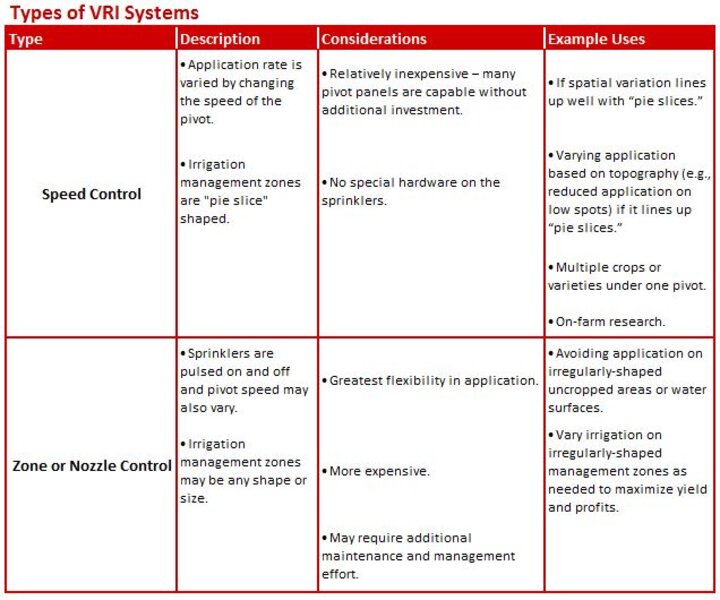
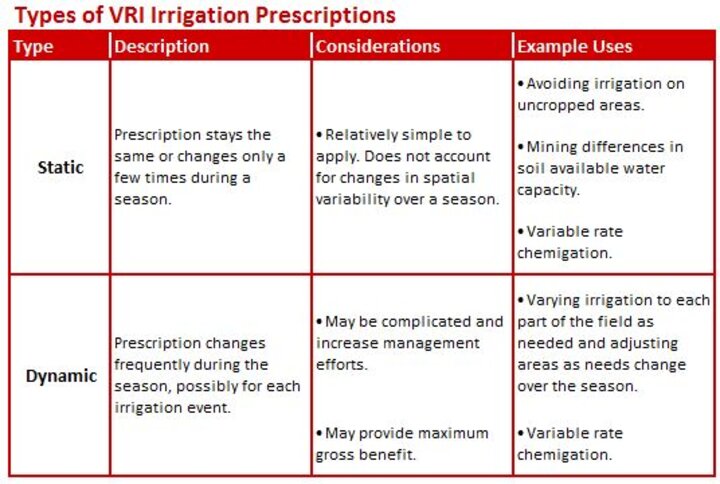
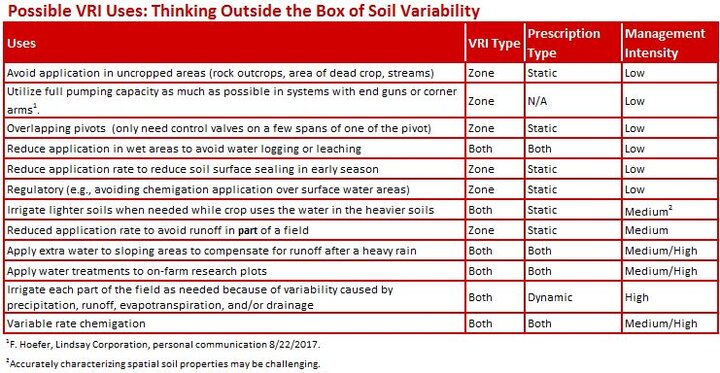
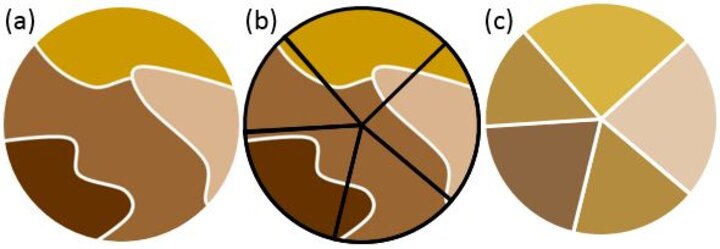
Figure 1. A hypothetical map of soil properties (a), possible speed control zones (b), and conceptual average soil properties for each management zone (c). Speed control may be sufficient to account for variability in some fields (Haghverdi and others, 2015).
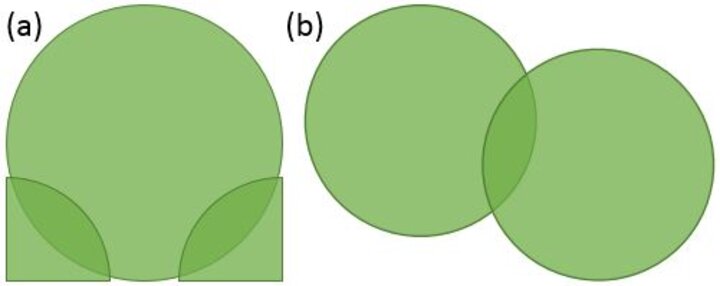
Figure 2. Examples of overlapping pivots. Over-application in the dark green areas could be reduced by using zone control on the large pivot in (a) or either pivot in (b).
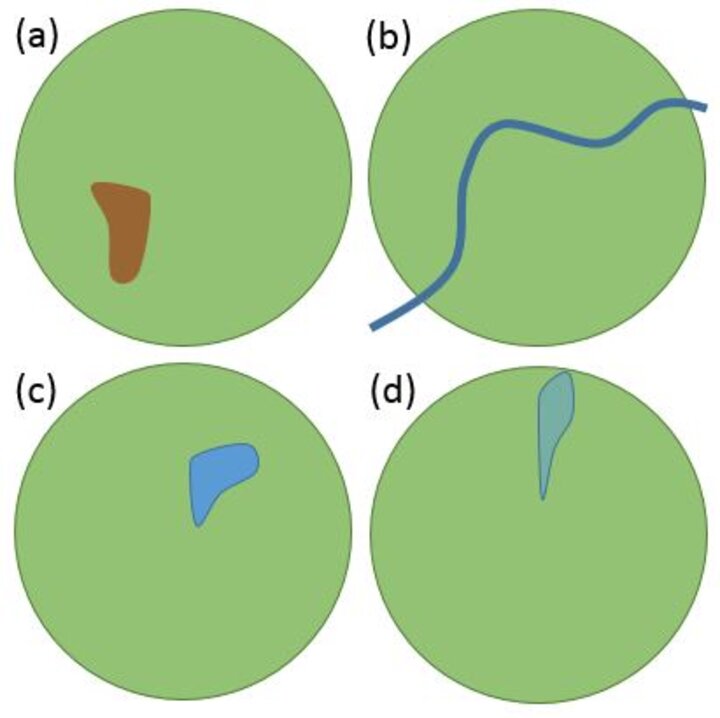
Figure 3. Examples of avoidance zones that could be implemented with VRI: uncropped or killed areas (a), surface water (b,c), and wet spots (d). Depending on the geometry, zone control may be best suited to avoid application in some areas (a,b,c), while speed control may be an adequate solution for other situations (d).
Other VRI Resources from UNL
This extension circular (Kranz and others, 2014) provides an overview of VRI.
This article (Lo and others, 2016) used NRCS soil survey data to predict the potential pumpage reduction if VRI was used to mine water from soils that store more off-season rainfall. Among 49,224 center pivot irrigated fields in Nebraska, this potential pumpage reduction exceeded 2” per year for 2% of fields and exceeded 1” per year for 13% of fields. The associated pumping cost savings, however, are unlikely to pay for zone control VRI on most fields at the present time. Therefore, more attention should be directed towards exploring yield benefits of VRI (e.g., reducing over-irrigation and optimizing deficit irrigation) and environmental impacts of VRI (e.g., minimizing nitrate leaching to aquifers).
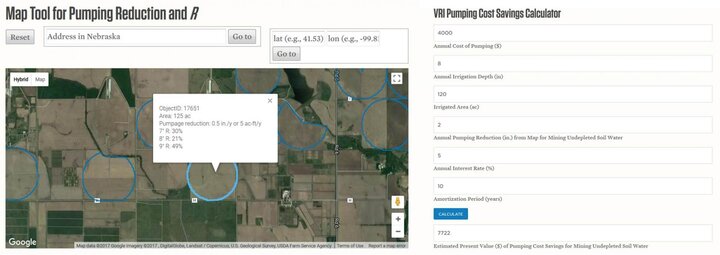
Figure 4. Screenshots of the online map tool for VRI pumping reduction.
This web tool (https://heeren.unl.edu/map) uses a map interface and a pumping cost savings calculator to present the findings from the study above. This tool can be used to compare fields in terms of the magnitude of soil variability, which may be positively associated with the magnitude of potential yield and environmental benefits from VRI. Before investing in an expensive VRI system and committing to the increased management requirement, producers are recommended to focus on improving management of their current irrigation systems (e.g., checking sprinkler nozzles and pressure regulators and using soil moisture sensors for irrigation scheduling). A system evaluation should be performed on a VRI system to assess how well the system is following prescription maps.
This article (Lo and others, 2017) conducted a case study for a method of mapping soil water properties when the required accuracy exceeds what is provided by the NRCS soil survey. Soil water properties were first determined at sparse sampling locations and then predicted throughout a field using a regression relationship with densely sampled variables such as elevation or apparent soil electrical conductivity (ECa). The analysis found that soil water properties do not relate closely to ECa on every field.
This article (Barker and others, 2017) investigated the use of soil water sensors for VRI management. If VRI will be used to meet the crop water needs in each part of the field, a combination of soil water sensors and remote sensing will likely be needed.
Acknowledgements
The authors are grateful for support from the Department of Biological Systems Engineering and the Water for Food Global Institute. This project was also supported by the Water, Energy and Agriculture Initiative from the Nebraska Corn Board, the Nebraska Soybean Board, the Agricultural Research Division at the University of Nebraska–Lincoln (UNL), and Nebraska Public Power District through the Nebraska Center for Energy Sciences Research at UNL.
An earlier version of this material was presented in a handout for Husker Harvest Days in 2017.
References
Barker, J. B., T. E. Franz, D. M. Heeren, C. M. U. Neale, and J. D. Luck. 2017. Soil water content monitoring for irrigation management: A geostatistical analysis. Agricultural Water Management 188: 36-49, doi: 10.1016/j.agwat.2017.03.024.
Evans, R. G., J. LaRue, K. C. Stone, and B. A. King. 2013. Adoption of site-specific variable-rate sprinkler irrigation systems. Irrigation Science 31(4): 871-887, doi: 10.1007/s00271-012-0365-x.
Haghverdi, A., B. G. Leib, R. A. Washington-Allen, P. D. Ayers, and M. J. Buschermohle. 2015. Perspectives on delineating management zones for variable rate irrigation. Computers and Electronics in Agriculture 117: 154-167, doi: 10.1016/j.compag.2015.06.019.
Kranz, W.L., S. Irmak, D.L. Martin, T.M. Shaver, and S.J. van Donk. 2014. Variable Rate Application of Irrigation Water with Center Pivots. University of Nebraska-Lincoln Extension, Lincoln, NE. EC2000. Available at: http://extensionpublications.unl.edu/assets/pdf/ec2000.pdf.
Lo, T., D. M. Heeren, L. Mateos, J. D. Luck, D. L. Martin, K. A. Miller, J. B. Barker, and T. M. Shaver. 2017. Field characterization of field capacity and root zone available water capacity for variable rate irrigation. Applied Engineering in Agriculture 33(4): 559-572, doi: 10.13031/aea.11963.
Lo, T., D. M. Heeren, D. L. Martin, L. Mateos, J. D. Luck, and D. E. Eisenhauer. 2016. Pumpage reduction by using variable rate irrigation to mine undepleted soil water. Transactions of the ASABE 59(5): 1285-1298, doi: 10.13031/trans.59.11773.
This article was reviewed by Burdette Barker & Tsz Him Lo